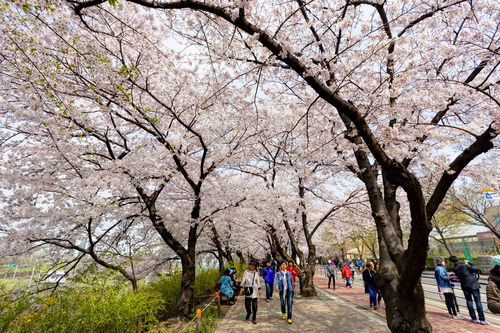When people think about green buildings, what generally comes to mind is solar panels, geothermal energy, improved insulation, green roofs, high-performance windows, rain-water recuperation, and so forth. However, the milieu in which the building is rooted also ought to be considered. Although we often forget it, being green also includes what lies beyond the walls! Landscaping, for instance, plays a major role in energy consumption. Trees, plants and the way you take care of them can have a significant impact on GHG emissions, and consequently, on your energy bills.

The soothing role of trees
Although this is universally true, trees generally are very good for the mood for people who live in big urban areas and don’t have easy access to non-urban environments. Not only are trees majestic and beautiful, they provide some shade on warm summer days, limit noise pollution, and allow birds to nest and to tweet by your window. Some even produce tasty, edible fruits a few steps away from your front door. Trees have a direct and significant impact on the mental and physical state of the people who live in the city. Yet, their presence around one’s house also has an impact on the overall energy-efficiency of the building.
Insulation
Trees are considered to be the biggest living species on earth. Mature ones often grow much higher than any one- or two-story houses and play the role of an umbrella in the summer, limiting the surface over which sun rays hit the house. They also provide an additional shielding layer in the winter, protecting the walls against the cold winds. This insulating capacity makes any urban house much more comfortable year round: hot air does not get into the house as much in the summer, and cool air does not reach the walls as much in the winter. The inside temperature therefore is much more stable.
Although all of this may seem obvious, it ought to be noted that the insulation capacity of trees is everything but trivial. Some studies demonstrate that having trees around the home in urban settings can reduce energy consumption significantly. In the winter, heating needs can be decreased by 15% while in the summer the cost of air conditioning can be reduced by as much as 50%! Not only do these savings potentially represent an inviting amount of money at the end of the year, they also indicate that the overall carbon footprint of any house with trees around it can be significantly smaller than its treeless and plantless equivalent.
Herbs and flowers
Although their green impact can seem more tenuous than that of mature trees, plants and herbs are far from being useless around the house. Indeed, having nearby some of the herbs you often use in your recipes (such as basil, cilantro, parsley, chives, thyme, rosemary, etc.) can add a tiny bit of autonomy to your household in the sense that you produce more of what you actually need to sustain your living needs. Not having to go to the supermarket to buy those herbs when they are missing in the fridge does not only rhymes with money savings: it also means less waste in terms of wrapping. Think about those little plastic bags and packages that you actually pay for every time you buy just a few tiny branches of fresh rosemary!
How you take care of the lawn also matters. Indeed, opting for an electric lawn mower, especially if the energy grid you are connected to produces renewable forms of energy, can yield substantial energy savings at the same time as it limits GHG emissions. The same can be said of any other instrument that can be used around the house such as grass trimmers and handheld blowers. In summary, thinking green beyond the inside of your house can result in a significant, positive impact on your living space’s overall energy-efficiency.
About the author: Alexandre Duval is a freelance blogger who writes about travel destinations in Quebec, Canada and elsewhere in the world for ViaRail promoting their travel Montreal packages. He has lived in three countries and travelled in more than fifteen. He is currently completing his master’s degree in Montreal.
Photo: The ninth Yeouido Spring Flower Festival from Shutterstock
[source: http://feeds.importantmedia.org/~r/IM-greenbuildingelements/~3/rxUZ1_F8xYQ/]

Leave a Reply
You must be logged in to post a comment.